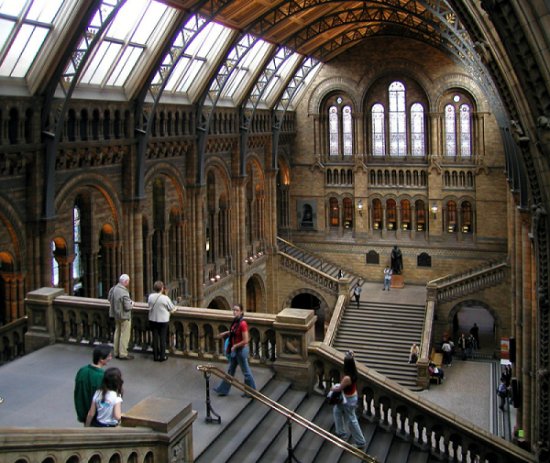In the Museums
Today, we go to museums. The University of Houston's College of Engineering presents this series about the machines that make our civilization run, and the people whose ingenuity created them.
I love museums. In a day-by-day world they are a place apart -- a time capsule, a fairyland. They seem as ethereal as the special effects on a 2-dimensional movie screen; but they are concrete. I'm just back from nine, museum-dense days in London and Cambridge, and I need to think out loud about this adventure in Museum Mecca.
Cambridge University is scattered throughout a renaissance town. The town itself is a museum, even before you enter any building. Many Colleges have their own museums. And, while the Cambridge churches often charge admission, the museums are free. Perhaps some theological statement lurks in there; I do not know.
Largest is the Fitzwilliam museum. It houses all manner of art, antiquities, and books. The Fitzwilliam Virginal Book, a primary source of late sixteenth and early seventeenth century music, is there. The Museum also holds most of Handel's original scores.
Twelve miles south, in Duxford, the Imperial War Museum is primarily a superb aircraft collection. Its huge American Air Museum is only one piece. We spent all day at Duxford, and went away with the sad knowledge that we'd hurried past as many airplanes as we'd taken in. Back in Cambridge, the Anthropology Museum alone held a huge array of items that I'd only read and written about.
Time closed in, and we moved on to London -- far richer still in its displays. In London's Science Museum, one event put an amazing perspective on British museums: we moved slowly, studying labels, discussing specific artifacts, when a docent came up and started a conversation. His job, it seems, was to spot patrons with more than a passing interest, and to enrich their visit.
He absorbed us -- spent the entire day showing us everything. And the wealth of their "everything" boggles the mind. Here was the first lawnmower, Bessemer's converter and Otto's engine, the apparatus James Joule used to confirm the first law of thermodynamics, the first photographic negatives, Turing's computer, the actual rockets whose red glare we sing about in our national anthem. All that before we'd even finished the first floor!
We visited the Tate Museum, the Natural History Museum, Greenwich Observatory, the Victoria and Albert and the Florence Nightin-gale Museums. Then, when we finally rested our tired feet in the returning airplane, we could only marvel at how much we'd missed.
And, after spending so much time with this rich past, I thought of Whitehead who wrote, "A science that hesitates to forget its founders is lost." I certainly view that remark with distrust, but it does contain a truth. Among the many lessons of these nine days was this: Every splendid thing we'd seen was given us by someone who'd transcended the past and ventured into unknown territory.
We need to claim and celebrate the greatness and beauty revealed here without being bound by it. Celebrate the genius, not the artifact. Each of us is remarkable. Each of us can do that one new thing that no one in these exhibits ever thought of doing.
I'm John Lienhard, at the University of Houston, where we're interested in the way inventive minds work.
The person from the London Science Museum who was so helpful was Michael Abbott.

Main hall of the London Museum of Natural History (Photo by John Lienhard)